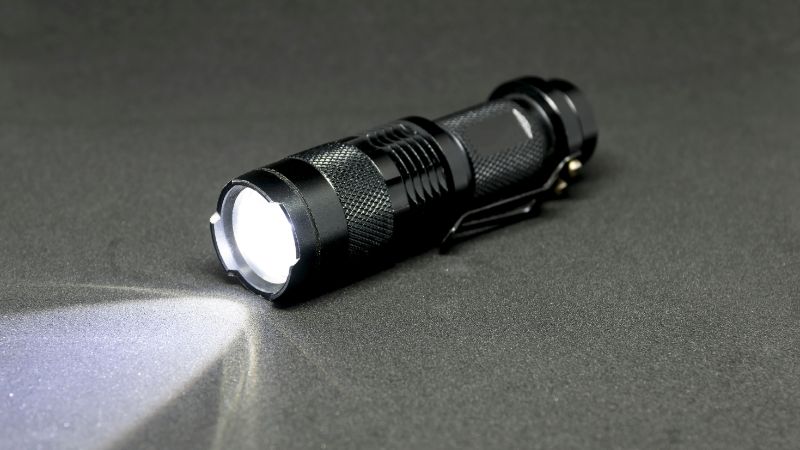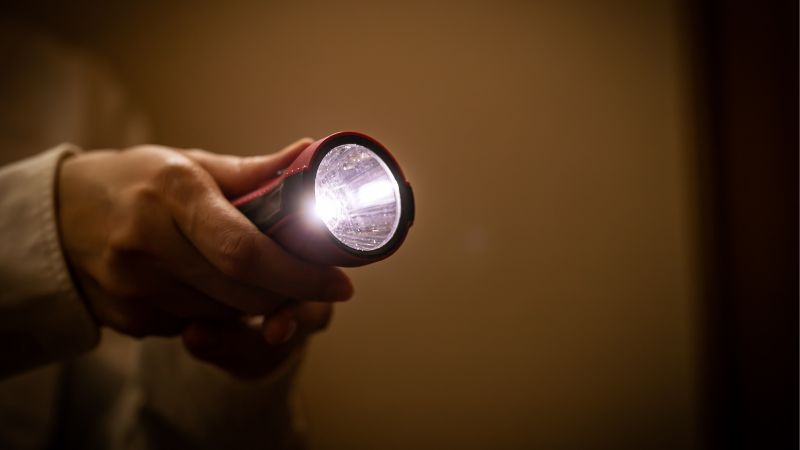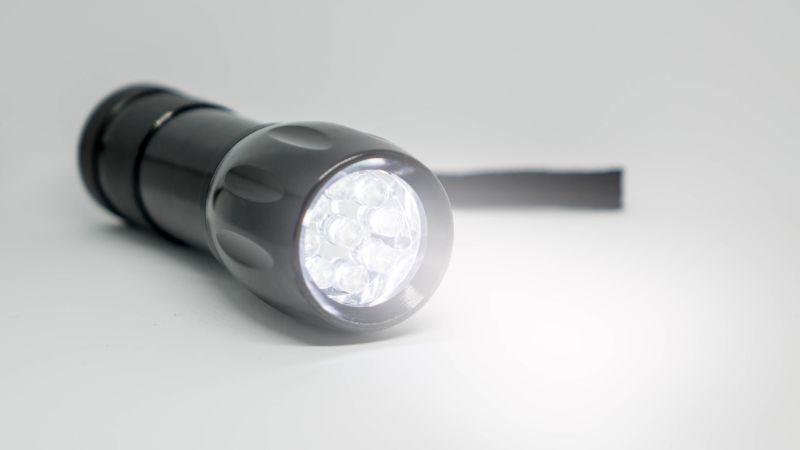Have you ever bought a flashlight that promised to light up a football field, but it barely lit up your hallway? For a long time, it was hard to know if you were getting a good flashlight because the marketing claims were all over the place. That’s why the ANSI FL1 standard was created. It’s here to help you feel confident in your choice and get the right tool for the job.

What is the ANSI FL1 Standard?
Think of the ANSI FL1 standard as a universal “nutrition label” for flashlights. It’s a set of official guidelines that companies can follow to measure and report how their flashlights perform. This standard was created by top organizations (ANSI and PLATO) to make things fair and clear for everyone.
Why the ANSI FL1 Standard Matters to You
This standard is a game-changer for anyone who buys a flashlight. It helps you understand what you’re actually getting. When you see the ANSI FL1 ratings on a package, you can trust that the flashlight will perform as advertised. This also pushes companies to make better products, which is a win-win for all of us!
The 6 Key Metrics of the ANSI FL1 Standard Explained
This is the heart of the standard. Understanding these six ratings will turn you into a savvy flashlight shopper. Let’s dig a little deeper into each one.
1. Light Output (Lumen): The Measure of Total Light
What it really is: Lumens measure all the visible light a flashlight produces. Think of it like the total volume of water flowing from a showerhead. It tells you how much light is available to fill a space.
How it’s tested: The flashlight is turned on inside a special device called an “integrating sphere” that captures and measures every bit of light coming out, not just the main beam.
What this means for you:
- High lumens (500+) are great for lighting up a wide area, like a campsite, a backyard, or a whole room during a power outage.
- Low to mid lumens (50-300) are perfect for general tasks like walking the dog, reading a map, or working under the sink. You don’t always need blinding light, and lower lumens will save battery life.
2. Peak Beam Intensity (Candela): The Brightness at the Center
What it really is: If lumens are the total water from the shower, candela is the power of a single, focused jet. It measures the intensity of the brightest spot in the beam. This is what makes a flashlight beam seem “strong” and reach far into the distance.
How it’s tested: A sensor measures the brightest point of the beam at a set distance.
What this means for you: Prioritize high candela if you need a “thrower” flashlight for spotting things far away. It’s essential for activities like:
- Boating or search and rescue.
- Identifying a noise at the far end of your property.
- Spotting trail markers when hiking at night.
3. Beam Distance (Meters): How Far the Light Reaches
What it really is: This is the practical result of high candela. It tells you the maximum distance, in meters, where the flashlight’s beam is still as bright as a full moon on a clear night.
How it’s tested: This isn’t a physical test but a calculation based on the candela measurement.
What this means for you: A beam distance of 200 meters means you can illuminate a person-sized object 200 meters away. It’s a measure of how far you can detect something, not necessarily identify it in detail. It’s a great way to compare the “reach” of two different flashlights.

4. Run Time (Hours): How Long it Lasts
What it really is: This isn’t just how long the light stays on. It’s the time it takes for the light output to drop to 10% of its initial brightness. This is a more realistic measure because lights dim as batteries drain.
How it’s tested: The flashlight is turned on with fresh batteries and timed until its brightness hits that 10% mark.
What this means for you:
- Pay close attention to which brightness level the run time is rated for (it’s often the lowest). A flashlight might have a 100-hour run time on its 20-lumen “eco” mode but only 2 hours on its 1000-lumen “turbo” mode.
- For emergency kits or long camping trips, a flashlight with a long run time on a usable medium setting is a fantastic choice.
5. Impact Resistance (Meters): Built to Survive a Drop
What it really is: This rating tells you how tough the flashlight’s housing is. It’s the height from which the flashlight can be dropped onto a hard surface without cracking or breaking.
How it’s tested: The flashlight (without batteries) is dropped 6 times from the rated height onto concrete, hitting a different side each time. It must still function perfectly afterward.
What this means for you: A 1-meter rating is standard. If you’re a mechanic, a construction worker, or just plain clumsy, look for a higher rating (2 meters or more) for peace of mind.
6. Water Resistance (IP Rating): Protection Against the Elements
What it really is: The IP (Ingress Protection) rating tells you how well the flashlight is sealed against dust and water. For flashlights, we usually focus on the water part.
How it’s tested: The light is subjected to specific water tests, from spraying to full submersion.
What this means for you:
- IPX4 (Water Resistant): Can handle splashes from any direction. Perfect for use in the rain.
- IPX7 (Waterproof): Can be fully submerged in up to 1 meter of water for 30 minutes. Great for boaters, fishers, or if you might drop it in a puddle.
- IPX8 (Submersible): Can survive in water deeper than 1 meter for an extended time. This is for serious water use, like diving.
ANSI FL1 Icons: A Quick Reference Guideline
To make things easy, look for these simple icons on the package:
- Light Output: Circle with light rays
- Peak Beam Intensity: Circle with a star
- Beam Distance: Double-headed arrow with meters (m)
- Run Time: A clock with hours (h)
- Impact Resistance: A weight with meters (m)
- Water Resistance: A water drop with the IPX rating
What the ANSI FL1 Standard Doesn’t Cover
The standard is amazing, but it doesn’t cover everything. It won’t tell you about the light’s color (warm vs. cool white), the beam’s quality (are there ugly rings or dark spots?), or long-term durability against things like scratches.
Conclusion: Making an Informed Choice
Now you’re armed with the knowledge to look past the hype. The ANSI FL1 standard lets you compare flashlights fairly and choose the perfect one for your needs. The next time you shop for a flashlight, check for those ratings. You’ll know exactly what you’re getting and can feel confident in your purchase.

Looking for Flashlight and Torch Manufacturers? Contact MF Opto
MF Opto (M&F Optoelectronics) is a 15+ year manufacturer and supplier of portable LED lighting solutions focused on reliability, competitive pricing and OEM flexibility. Core capabilities: product design & R&D, in‑house prototyping, production QA, on‑time delivery and 12‑month warranty.
Key product families
- Portable work lights — rechargeable & battery options, COB/SMD, power‑bank models, tripods and magnetic mounts. (See: Portable Work Lights)
- Inspection lamps — compact, magnetic, gooseneck and UV options for mechanics and workshops. (See: Inspection Lamps)
- Flashlights & handhelds — pocket, tactical, zoomable and long‑range spotlights; UV and multifunction types. (See: Flashlights)
- Camping lanterns — collapsible, solar, multispeed fan combos, mosquito‑killer and power‑bank lanterns (100–1600 lm models). (See: Camping Lanterns)
- Handheld spotlights — high‑output dual LED/COB spotlights with USB‑C and power‑bank features. (See: Handheld Spotlights)
- LED road flares & warning lights — rechargeable, magnetic, 360° and sequential flash patterns for roadside safety. (See: LED Road Flares)
- Headlamps — lightweight, motion‑sensor, multi‑mode and hard‑hat compatible headlamps (USB‑C charging). (See: Headlamps)
- Solar security & indoor lighting — PIR sensor solar flood/yard lights and energy‑efficient sensor/night lights for home and landscape. (See: Solar Security Lights and Indoor Lighting)
Sales & support
MF Opto delivers a broad, standards‑oriented portfolio of portable lighting products engineered for durability, OEM flexibility and rapid product development. Our offering suits distributors, industrial buyers and OEM customers needing versatile, electrically efficient lighting solutions.
Contact Us for quotes and OEM inquiries.
FAQs About the ANSI FL1 Standard
- Which is more important: lumens or candela?
It depends on your goal. Choose lumens for lighting up a wide area close to you (like a floodlight). Choose candela for a focused, long-distance beam (like a spotlight).
- Why is my flashlight’s run time shorter than advertised?
The advertised run time is usually for the lowest brightness setting. If you’re using “High” or “Turbo” mode, the battery will drain much faster.
- Do more lumens mean a longer beam?
Not always. Beam distance comes from candela (beam focus), not just lumens (total light). A focused flashlight with fewer lumens can out-throw a high-lumen floodlight.
- What if a flashlight doesn’t show any ANSI FL1 ratings?
Be careful. Without these ratings, the performance claims might be exaggerated. It’s safer to buy products that have been tested to this standard.
- Can I take my IPX7 waterproof flashlight swimming?
No. An IPX7 rating is for accidental drops in shallow water, not for swimming. For swimming or diving, you need a flashlight with an IPX8 rating.
- Is the ANSI FL1 standard a law?
No, it is a voluntary standard. However, it has been widely adopted by most reputable flashlight manufacturers as a sign of transparency and commitment to quality. Seeing the ANSI FL1 icons is a good indicator that you’re buying from a brand that stands behind its performance claims.






